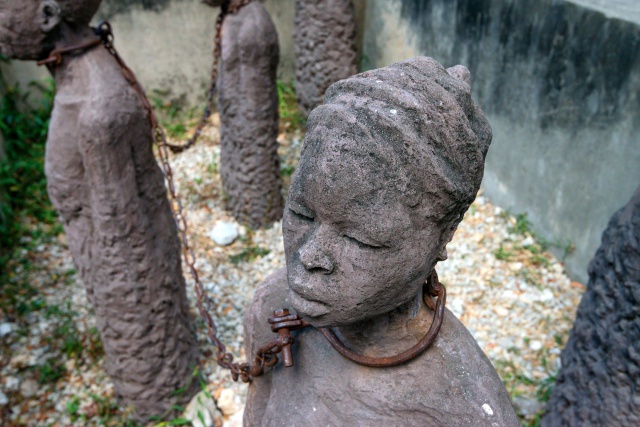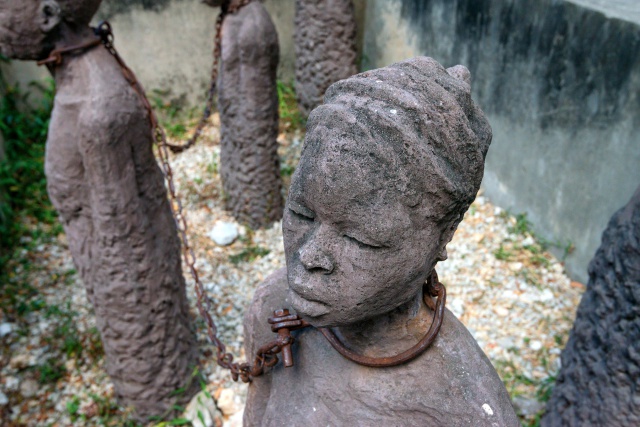Happy Black History Month! For each of the 28 days of February, we at The Mary Sue will have a post about a black woman you should know about—some you may have heard of, some a little bit more obscure, and some fictional who still deserve a lot of love.

Day Six: Celia, a Slave
For the last few posts, excluding Janet, I have focused on women who managed to survive the devastating institution of slavery and worked towards freedom for other black people. Those stories are important because they show how black women have survived in even the worst of circumstances. However, we can not forget the millions of lives lost to the institution. The men, the women and the children who lived and died on the plantations. Including those who tried to free themselves, but could not make it. That is the story of Celia, a Slave.
Incidents in the life of a Slave Girl may have highlighted the sexual violence directed towards female slaves, but it was not the first time it was brought to national attention. In 1855, six years before Harriet Jacobs’ book was released, nineteen-year-old Celia was charged with the murder of her master.
Robert Newsom was one of the wealthiest men in Missouri, having owned around 800 acres of land as well as a successful farm. In 1849, his wife died. Less than a year later Newsom made the trip to Audrain County to purchase Celia, his first female slave as he already owned five male ones. Celia was only fourteen years old and it is believed that Newsom raped her for the first time during the ride back from Audrain County.
During this time, slaves were not protected under the law and therefore a master could rape his slaves without any legal issue. They were not people. Only property. Celia was given her own cabin and was forced to have sex with him repeatedly. She ended up having two children, with at least one being Newsom’s.
Celia began a romantic relationship with one of Newsom’s other slaves, George. Now, something important to remember is that slaves could not get married without permission from their masters and even if they were “married” it wouldn’t stop them from being sold apart and forced to have children with other slaves.
George decided to give Celia an ultimatum saying “he would have nothing more to do with her if she did not quit the old man.” Now, I want to take a small moment to just ask…what the hell was George thinking? Did he believe that Celia had a choice in the matter? She was being repeatedly raped by this man, because that was literally the purpose Newsom bought her for, and yet George pulls this crap?
Celia then began to beg Newsom to stop and even tried to get some help from his children. Still, Newsom made it clear that he wasn’t going to stop, and Celia said that if he tried to she would hurt him. On June 23, 1855, when Newsom went to Celia’s cabin to rape her, she clubbed him over the head with a stick that she had brought into her cabin and killed him. She spent the night trying to burn his body to get rid of the evidence.
Newsom’s daughters began to worry about their father and began to search for him around the property. George was questioned about Newsom’s whereabouts and stated that “he believed the last walking [Newsom] had done was along the path, pointing to the path leading from the house to the Negro Cabin.” Again, what the hell is wrong with George?
Celia denied knowing what had happened to Newsom, but after a long interrogation and threats, she confessed that she had killed Newsom and attempted to dispose of his body. She was arrested and taken to court. She entered a plea of “not guilty” and the trial officially began in October 1855. It is also important to note that when the attempted rape took place, Celia was also pregnant with her third child.
Celia’s defense tried to argue that in the state of Missouri it was a crime “to take any woman unlawfully against her will and by force, menace or duress, compel her to be defiled,” and resisting would have been considered a justifiable excuse for a woman to kill a man. In the jury instruction, the defense requested that the jury be told that the words “any woman” should include enslaved women and that Celia’s actions would be seen as legitimate if she was resisting rape.
The judge denied the request and also struck from the record throughout the trail any reference to the fact that Celia was sexually assaulted or that Newsom had intercourse with Celia. On October 10, 1855, the jury found Celia guilty of murder in the first degree. Celia’s defense sent an appeal to the Supreme Court who responded on December 14, 1855: “upon an examination of the record and proceedings of the Circuit Court of Callaway County in the above case, it is thought proper to refuse the prayer of the petitioner…It is therefore ordered by the Court, that an order for the Stay of the execution, in this case, be refused.”
Celia was hanged on December 21, 1855, at 2:30 p.m
The case of State of Missouri v. Celia, a Slave highlights a few things. It solidified in legal terms that black slaves did not have the right to self-defense. Slaves were property, which meant they could not consent to sex because their masters’ were entitled to it. This would not have happened if Celia were white.
But the case also tells us something about Celia, she was willing to stand up to Newsom over her love for George. She went to seek help from Newsom’s daughters, she tried to push Newsom away, but she received no help. Even in the end after committing the crime it was George’s words that brought the cloud of suspicion to her doorway.
Celia spent five years of her life being raped by a man in his 70s, who had power over her in every conceivable way. When she died she left behind two children, it is unclear if she had the third, who would also be victims of slavery. Celia was only seen as human when it came to her punishment.
Recommended Reading:
Celia, A Slave by Melton A. McLaurin
(image: Yakov Oskanov/Shutterstock)
Want more stories like this? Become a subscriber and support the site!
—The Mary Sue has a strict comment policy that forbids, but is not limited to, personal insults toward anyone, hate speech, and trolling.—










Published: Feb 6, 2018 12:08 pm